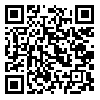Volume 5, Issue 2 (2019)
Pharm Biomed Res 2019, 5(2): 25-31 |
Back to browse issues page
1- Department of Pharmacology and Toxicology, Faculty of Pharmacy, University of Benin, Benin City, Nigeria
Abstract: (1801 Views)
Diabetes mellitus (DM) and hypertension usually co-exist, and when this happens, the prognosis would be worse than each disease alone. Given this, we evaluated the possible effects of valsartan and amlodipine administration on metformin-treated diabetic rats models induced by streptozotocin. Male Wistar rats (200–350 g) were fasted overnight. Then, we induced DM by administrating a single dose of 40 mg/kg streptozotocin (IP), which was confirmed after 48 h. Animals with blood sugar ≥ 200 mg/dl were considered diabetic and divided into four diabetic groups of untreated diabetic animals (Group B), diabetic animals treated with metformin (Group C), diabetic animals treated with metformin plus amlodipine (Group D), and diabetic rats treated with metformin plus valsartan (Group E). There was also a group A, consisting of normal rats with no drug treatment. After six weeks of treatment, we sacrificed the animals under chloroform anesthesia, and their blood samples were collected for hematological and biochemical analyses. The mortality rate in untreated diabetic rats was 100% before 6 weeks, but anti-diabetic treatment (metformin) significantly (P < 0.05) improved the survival rate and controlled their blood glucose level. The addition of antihypertensive drugs (amlodipine and valsartan) enhanced this curative effect. The various treated groups showed ameliorations in pathologic changes and biochemical indices, as well as, evidence of organ protection, compared with the untreated diabetic group. The study showed that adding an antihypertensive drug (amlodipine or valsartan) to metformin regimen improved outcomes in diabetic rats compared to using metformin alone.
Keywords: Type 2 diabetes, biguanides, hypertension, calcium channel blockers, angiotensin II receptor blockers
Type of Study: Original Research |
Subject:
Pharmacology
| Rights and permissions | |
 |
This work is licensed under a Creative Commons Attribution-NonCommercial 4.0 International License. |




